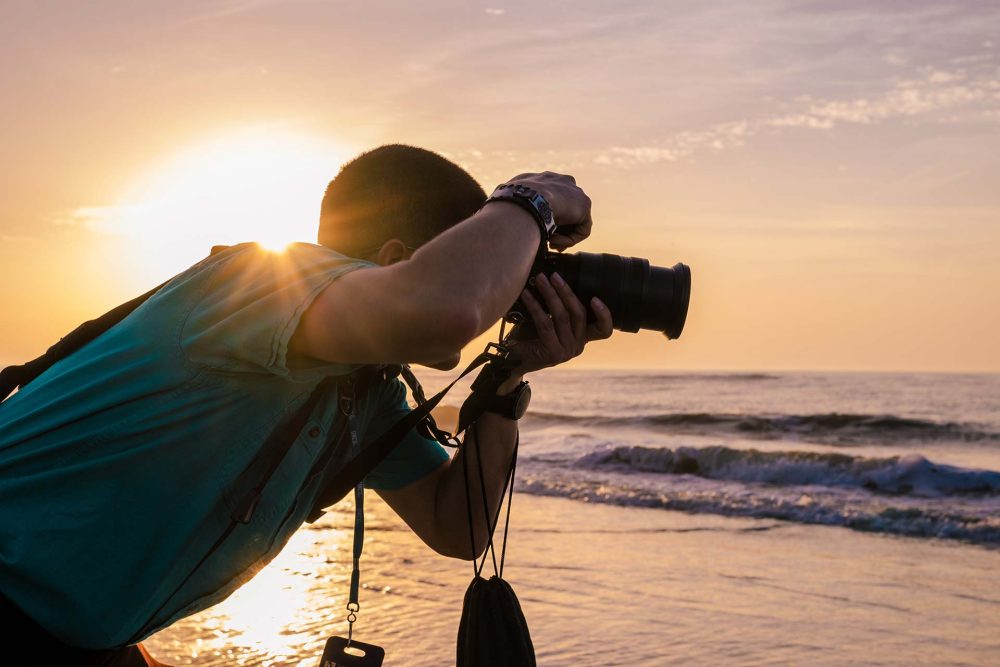Introduction: Capturing Moments, Creating Meaning
Photography is more than a mechanical act of pressing a shutter. It is a powerful language of visual storytelling, a medium that arrests time and gives form to memory. From black-and-white portraits in gilded frames to vibrant digital landscapes shared globally within seconds, photography has evolved into a complex interplay of art, technology, and emotion. At its best, a photograph is not merely a replica of what the eye sees—it is a curated perspective, a deliberate expression of how the photographer experiences the world. As both a craft and a cultural force, photography shapes how we remember, interpret, and engage with reality.
A Brief History: From Chemistry to Pixels
Photography’s origins trace back to the early 19th century, when scientists and artists alike were captivated by the idea of capturing light. The first permanent photograph, created by Joseph Nicéphore Niépce in 1826, required an eight-hour exposure. Soon after, Louis Daguerre introduced the daguerreotype, dramatically reducing exposure times and bringing photography into public consciousness.
Key Milestones in the Evolution of Photography:
-
1839: Invention of the daguerreotype
-
1888: Kodak’s introduction of the consumer camera, “You press the button, we do the rest”
-
1925: Leica’s compact 35mm camera revolutionizes street and documentary photography
-
1991: Kodak produces the first professional digital camera system
-
2007 onwards: Smartphone photography democratizes the medium
Each innovation brought new possibilities and new challenges, but the core intent remained unchanged: to distill experience into image.
The Artistry Behind the Image
While technology is the vehicle, artistry is the essence of great photography. It is the photographer’s eye—trained or instinctive—that distinguishes a mundane snapshot from a compelling image. Composition, lighting, texture, and emotion are woven together with precision to create something evocative.
Key Elements of Artistic Photography:
-
Composition: The careful arrangement of elements within the frame, guided by rules such as the Rule of Thirds or leading lines
-
Lighting: The interplay between light and shadow, which can dramatically influence mood and depth
-
Perspective: The angle or point of view chosen to capture the subject, often altering perception and meaning
-
Timing: Sometimes called the “decisive moment,” capturing an expression or gesture at the perfect instant
-
Post-processing: Enhancing an image after it is captured, often used to bring out details or correct exposure
True artistry lies in intent. A technically perfect photo without purpose feels hollow, while a grainy, imperfect image with soul can haunt us for a lifetime.
Photography as a Form of Storytelling
What makes a photograph memorable isn’t just its aesthetic—it’s the narrative it conveys. A photo can whisper or shout, question or affirm. In documentary photography, each image can be a witness, a testament, or a plea for justice. In fashion or fine art, photography becomes a canvas for conceptual exploration.
Types of Narrative Photography:
-
Photojournalism: Capturing real events to inform, provoke, and evoke empathy
-
Portraiture: Revealing the personality, status, or emotional state of the subject
-
Street Photography: Observing spontaneous human interactions and urban life
-
Landscape Photography: Celebrating nature’s grandeur or subtlety
-
Conceptual Photography: Using staged imagery to express abstract ideas
Each genre demands a unique approach, but all aim to resonate with the viewer on a deeper level.
The Impact of Digital Technology
The shift from film to digital changed not only how images are captured but how they are shared, stored, and consumed. High-quality cameras are now accessible in smartphones, enabling virtually anyone to take and publish photos instantly. Social media platforms have further accelerated the pace and breadth of photographic communication.
Consequences of the Digital Revolution:
-
Increased Accessibility: More people than ever before are exploring photography
-
Over-saturation: The sheer volume of images can dilute impact and attention
-
Editing Tools: Software like Lightroom and Photoshop has made post-production more integral than ever
-
Loss of Tangibility: Digital storage, while convenient, has reduced the tactile experience of printed photos
Digital photography democratized the medium, but it also raised questions about authenticity, originality, and the ephemeral nature of the image.
Ethics and Responsibility in Photography
As with any powerful medium, photography comes with ethical considerations. The act of photographing someone—especially in vulnerable or intimate settings—carries an implicit responsibility. Images can uplift or exploit, inform or mislead.
Ethical Principles in Photography:
-
Informed Consent: Respecting the rights and dignity of subjects
-
Authenticity: Avoiding manipulation that distorts truth in journalism or documentary work
-
Contextual Integrity: Ensuring that images are presented with appropriate background and explanation
-
Cultural Sensitivity: Avoiding exoticism or stereotyping in travel and portrait photography
An ethical photographer does not simply aim to capture beauty, but to do so with conscience and care.
Photography in the Age of AI
Artificial intelligence has begun to redefine how photographs are captured, edited, and even generated. AI-powered tools can correct composition, enhance resolution, and automate editing, while generative models can create photo-realistic images without a camera ever clicking.
Current and Emerging AI Trends in Photography:
-
AI Retouching: Automatic skin smoothing, background removal, and color correction
-
Image Recognition: Organizing vast libraries through facial recognition and tagging
-
Generative Imagery: Creating synthetic photos that mimic reality
-
Augmented Reality Integration: Blending real-time images with digital elements for immersive storytelling
While these tools expand creative possibilities, they also blur the line between real and artificial, urging photographers to rethink what constitutes an authentic image.
Conclusion: The Eternal Allure of the Image
Photography is, and will always be, a mirror of human experience—fleeting yet immortal. It preserves what the eye sees and what the heart feels. In a world inundated with visual content, the challenge is not merely to capture more images, but to capture meaning. The camera is a tool, but the photographer is the storyteller, the curator of light and moment.
As technology evolves and aesthetics shift, the essence of photography endures: a dance between precision and intuition, observation and imagination. In every shutter click lies a question—what do we choose to see, and why does it matter?










